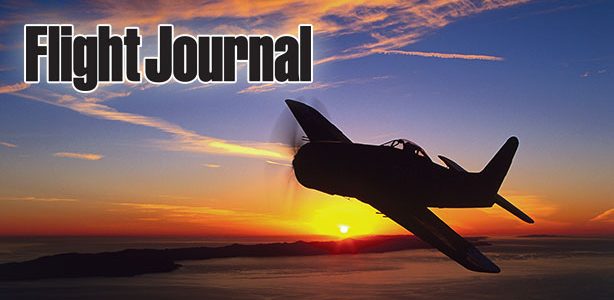Dear Editor,
In a June 28 Op.Ed. piece on the first flight claim of Gustave Whitehead,
http://www.courant.com/news/opinion/hc-op-sikorsky-whiteheads-flight-never-happened-06-20130628,0,438644.story Sergei Sikorsky, an aviation consultant of famous pedigree, opines “Whitehead’s Only
Flight Was One of Fancy”. Calling it “pure fiction, not fact”, he suggests it was “born
in the imagination of [the…] Editor of the Bridgeport Sunday Herald”.
I recently published my findings on Gustave Whitehead. They were peer-reviewed
and confirmed earlier this year, leading to the recognition of Whitehead’s claim.
Mr. Sikorsky chose not to participate in this process. However, I’m happy to engage
him here.
Mr. Sikorsky speculates that the Bridgeport Herald’s Aug. 18, 1901 eyewitness report
describing Whitehead’s flight was inspired by an event one month earlier “on July 12,
1901” in Paris when Alberto Santos-Dumont flew around the Eiffel Tower in an airship.
Mr. Sikorsky alleges, the Bridgeport Herald simply made up the story, modeling it on
those events.
There are several problems with this theory. To address them, it’s first necessary to
point out how historians work. We’re bound by the same Rules of Evidence that courts
use. We differentiate between evidence, circumstantial evidence, hearsay and speculation.
Statements by parties and their relatives have low evidentiary weight. Testimony by
unrelated persons who corroborate each other have high evidentiary weight – even
moreso when given under oath.
What Mr. Sikorsky proffers here is speculation. Unfortunately, neither hearsay nor
speculation are allowed when establishing (or dismissing) issues of historical fact.
He writes, the ropes attached when testing Whitehead’s aircraft and its soft landing
somehow ‘prove’ the article was about a balloon. However, the Wright brothers
occasionally used ropes to secure their aircraft; and the space shuttle made soft landings.
That doesn’t ‘prove’ they were balloons. Such arguments are ‘circumstantially speculative’.
The same applies when Mr. Sikorsky writes, “the single most damaging element is [ ]
that he never attempted to [ ] repeat his alleged flights”. Firstly, unsuccessful powered
flight attempts by Whitehead in 1897 and 1899 and many successful ones in the
timeframe 1901-1903 are well-documented. These were not one-off events. Secondly,
whether he did or didn’t fly after 1903 doesn’t somehow circumstantially ‘prove’ he
never flew in 1901. That’s not how evidence works. Such arguments are non-conclusive.
After 7 years, many factors could have explained why Mr. Whitehead changed his focus.
For example, the record shows, in 1902 Whitehead’s business partner shut him out of
his factory, leaving him broke. With a wife and kids to support, he did what most guys
would have done: he gave up flying and concentrated, instead, on his lucrative engine-
building business.
When Mr. Sikorsky writes, “Whitehead was unwilling (or unable) to produce even one
flight photo”, he neglects that three independent news reports describe having seen a
photo of Whitehead flying in his 1901 powered airplane. He also ignores the discovery
of what appears to have been the photo they were referring to.
Mr. Sikorsky is simply wrong when he writes, “Even Whitehead’s wife doubted that he
had ever flown.“ Luisa Whitehead never doubted it. What she said was that she hadn’t
seen it. (She had an infant child at home and, understandably, didn’t want to get up
before dawn and go out to the edge of town to witness the test flight.) But she did
confirm that he told her about it when he got home. [However, even if someone had
said, they didn’t see it or didn’t believe it happened, that’s neither proof nor does it
negate testimony of those who say they saw it.]
Perhaps the most fascinating of Mr. Sikorsky’s observations is when he writes,
“Affidavits gathered in 1935 and 1936 covered events of 35 years earlier, when many
of the witnesses were children.” Perhaps he’s unaware that, of the five witnesses
present in Kitty Hawk in 1903, only two made written statements. One, John T. Daniels,
– a child at the time – testified in 1935 that he’d carried the Wrights’ airplane up the
sand dune and that it took off toward the ocean into a 27mph wind, never once flying
above head-height. The other, Etheridge, wrote that he’d seen the same thing Daniels
did (i.e., he didn’t actually testify to his own observations). That’s what the famous
photo (released 1908) shows.
My point is, the evidence for what Mr. Sikorsky says was the world’s first flight (by the
Wrights in 1903) is based on a far lower standard of evidence than Mr. Whitehead’s claim.
If he rejects Whitehead’s evidence, he must also reject the Wrights’ evidence. And if he
accepts the Wrights’ evidence, he must also accept Whitehead’s evidence. It’s either
both or none. Only if he applies different standards of evidence to each claim can he
accept one and reject the other.
Best regards,
John Brown
Historian
www.gustave-whitehead.com
















